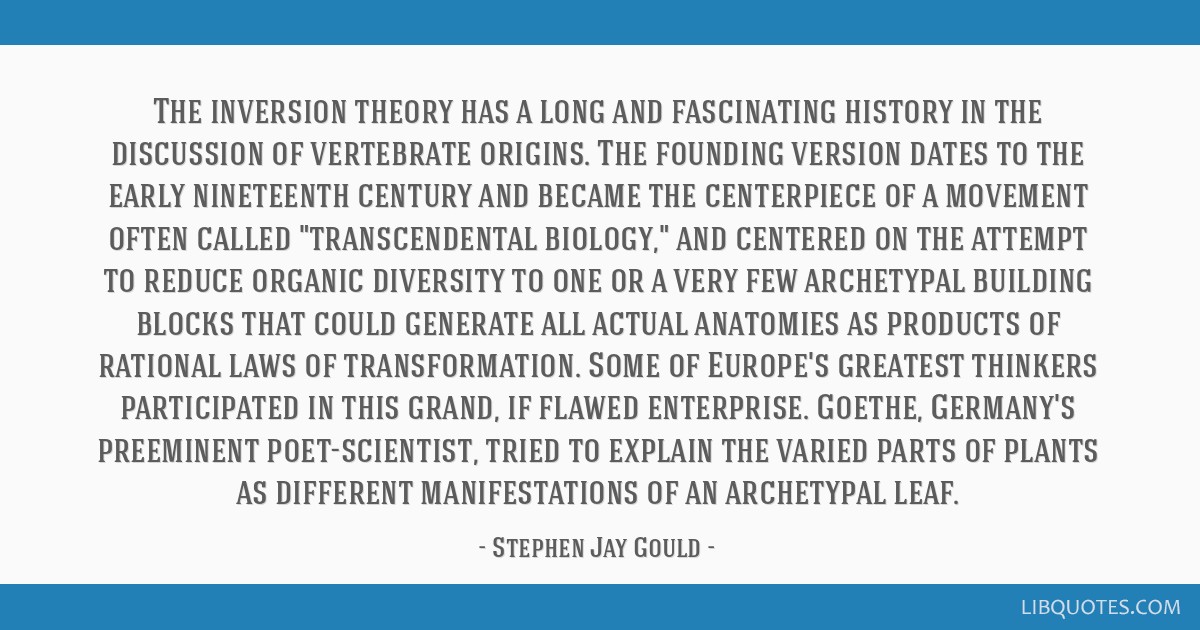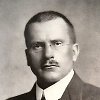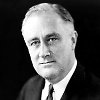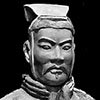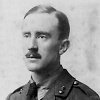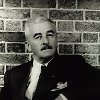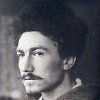The inversion theory has a long and fascinating history in the discussion of vertebrate origins. The founding version dates to the early nineteenth century and became the centerpiece of a movement often called "transcendental biology," and centered on the attempt to reduce organic diversity to one or a very few archetypal building blocks that could generate all actual anatomies as products of rational laws of transformation. Some of Europe's greatest thinkers participated in this grand, if flawed enterprise. Goethe, Germany's preeminent poet-scientist, tried to explain the varied parts of plants as different manifestations of an archetypal leaf.
"Brotherhood by Inversion", p. 325 - Leonardo's Mountain of Clams and the Diet of Worms (1998)
